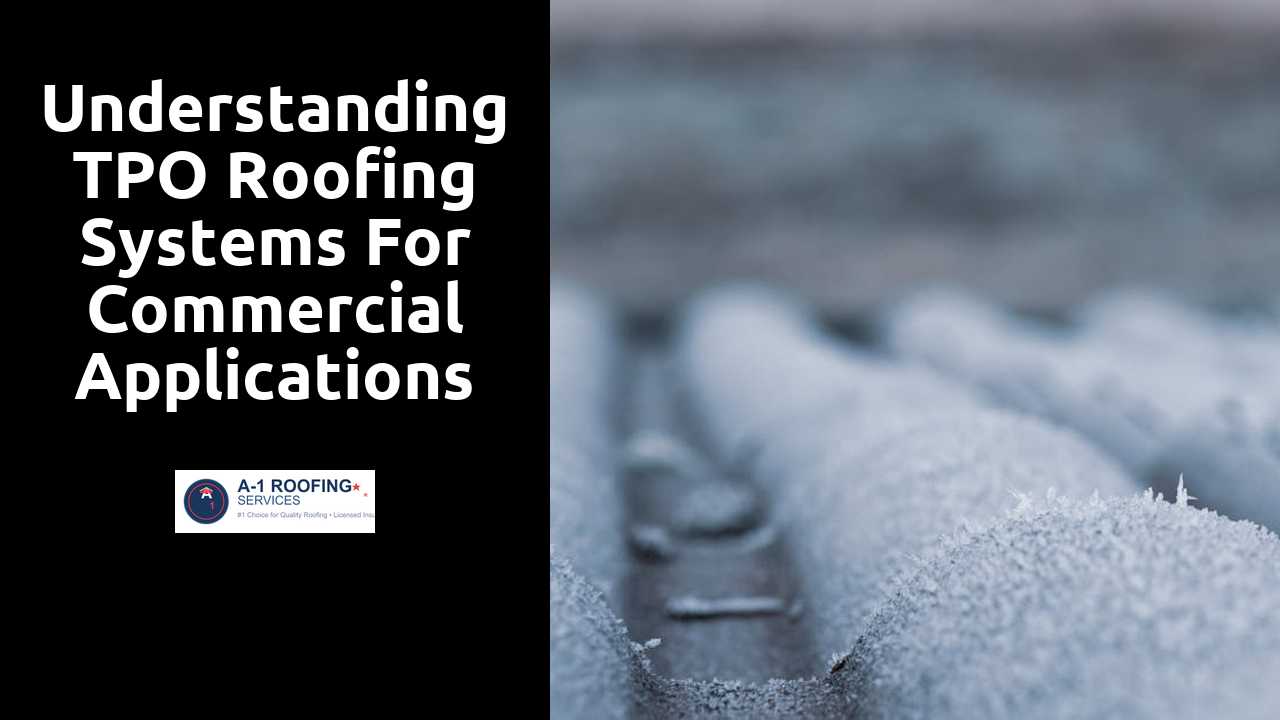
Understanding TPO Roofing Systems for Commercial Applications
Table Of Contents
Comparing TPO with Other Roofing Systems
TPO roofing, a single-ply membrane made from ethylene, polypropylene, and rubber, offers unique benefits compared to traditional systems like PVC and EPDM. Its reflective surface can help improve energy efficiency by lowering cooling costs. Furthermore, TPO membranes are relatively lightweight, which can simplify installation and reduce the load on structural supports. However, while TPO is generally less expensive than PVC, it may not offer the same level of chemical resistance, making it less ideal for certain industrial applications.
When evaluating roofing options, it's essential to consider both cost and performance. While TPO excels in areas such as energy efficiency and ease of installation, EPDM might outperform it in terms of longevity and durability in extreme weather conditions. PVC roofing systems, known for their robustness and resistance to chemicals, might be better suited for high-risk environments where exposure to harsh substances is common. Each roofing solution has its specific use cases, necessitating a comprehensive analysis based on the requirements of the building and climate conditions.
Continue to read this blog post for more great tips.
Advantages and Disadvantages of TPO
TPO roofing systems offer several advantages that make them a popular choice for commercial applications. One significant benefit is their energy efficiency. TPO membranes are highly reflective, which can help reduce cooling costs during hot weather. Additionally, they are generally lightweight and easy to install, contributing to lower labor costs. Their resistance to UV radiation and chemical exposure also enhances their durability, leading to a longer lifespan compared to some other roofing materials.
However, TPO is not without its drawbacks. The mechanical attachments used in installation can be susceptible to failure, particularly in high-wind areas. Furthermore, while TPO is designed to resist tearing, the seams may deteriorate over time if not installed correctly, leading to potential leaks. Some industry experts also express concerns about the overall long-term performance of TPO compared to materials like EPDM or PVC, as variations in product quality can affect durability and effectiveness.
Expected Lifespan of TPO Roofing
TPO roofing systems typically offer an impressive lifespan that ranges from 15 to 30 years, depending on various factors such as installation quality and maintenance practices. Many manufacturers provide warranties of up to 20 years, which can indicate the expected duration of performance under standard conditions. Proper installation by certified professionals plays a crucial role in maximizing the longevity of the roof. Additionally, routine inspections and timely repairs can help address minor issues before they escalate into more significant problems.
Different environmental factors can influence the actual lifespan of TPO roofing. Regions with extreme temperatures, high UV exposure, or severe weather conditions may experience a shorter lifespan due to increased wear and tear. The quality of materials used during the installation process also affects durability. Regular maintenance, including cleaning and monitoring for damage, can significantly extend the service life of TPO systems, ensuring that they remain effective over time.
Factors Affecting Durability and Longevity
The durability and longevity of TPO roofing systems are influenced by various factors, including material quality, installation methods, and environmental conditions. High-quality TPO membranes typically demonstrate superior resistance to UV radiation, punctures, and weathering. Proper installation practices such as adequate seam welding and secure fastening can significantly enhance the roof’s ability to withstand external stresses.
Additionally, regional climate plays a crucial role in determining how long TPO roofing will last. Areas with extreme temperatures, heavy rainfall, or frequent hail may prompt faster degradation of materials. Regular maintenance, including inspections and prompt repairs of any damages, also contributes to extending the overall lifespan of TPO roofs. By addressing these elements, property owners can maximize the effectiveness and durability of their TPO roofing systems.
Environmental Impact of TPO Roofing
TPO roofing systems have garnered attention for their relatively low environmental impact compared to other options. This is primarily due to their energy-efficient properties, often reflecting sunlight and helping to reduce energy consumption for cooling in commercial buildings. Many TPO membranes contain a significant percentage of recycled materials, which contributes to a lower carbon footprint during production. The materials are designed for durability, which means they require less frequent replacement, further minimizing the environmental toll associated with roofing materials.
The sustainability of TPO is enhanced by the potential for recycling at the end of its life cycle. Unlike traditional roofing systems that may end up in landfills, TPO can be repurposed, reducing waste. This characteristic not only allows for a more sustainable approach in commercial construction but also aligns with increasing regulatory pressures for greener building materials. As awareness of environmental issues grows, more building owners are considering TPO as a viable option for their roofing needs.
Sustainability and Recycling Options
TPO roofing systems stand out for their potential to contribute to a more sustainable built environment. Many manufacturers have begun incorporating recycled materials in the production of TPO membranes, reducing the demand for virgin resources. This innovation supports the ongoing effort to minimize the environmental impact of roofing materials. Moreover, TPO is energy-efficient, thanks to its reflective properties that help reduce heat absorption. This can lead to lower energy consumption for cooling buildings, further enhancing its eco-friendly credentials.
Recycling is a critical aspect of TPO's sustainability profile. End-of-life TPO membranes can often be recycled into new roofing products or other industrial materials, thus diverting waste from landfills. Several companies are establishing programs aimed at facilitating the recycling of TPO, making it easier for contractors and building owners to participate in sustainable practices. Emphasizing these recycling options encourages a circular economy approach within the roofing industry, promoting the idea that materials need not end their life cycle in a landfill.
Related Links
Exploring EPDM Roofing: Benefits for Commercial PropertiesThe Durability of Modified Bitumen Roofing in Harsh Climates